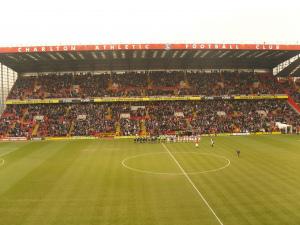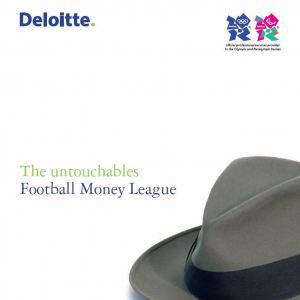I’m a bit late with my spring cleaning this year, using the last Bank Holiday weekend to do all of my clearing in my office and putting everything away. Under a pile of papers and magazines that obviously hadn’t been touched for a couple of years I came across the Deloitte & Touche Annual Review of Football Finance dated July 2003. Surely nothing had changed in English football in such a short period? Well, you would be wrong. In fact the last decade as seen more change in football than the previous century I would surmise. This was a time when Wimbledon were still known as just that, playing their football in the 2nd tier (Still known as plain old Division One) of English football.
Even on page one you start to get the picture nobody knew what would happen in football. Dan Jones, Director and Partner in Deloitte & Touche Sport explain that the previous year had been:-
“a watershed in some fundamental aspects of football finance” and “we would never see loses like the 2000/01 levels in the Football League again”.

Next up is a statement that just shows how wrong we all got it.
“The clubs that will succeed will be those with low debt, high attendances, a good record of wages to turnover ratio control and a consistent track record of success.”
Since the publication in 2003 who have won the league? Manchester United five times, Chelsea three and Arsenal once. And who has the biggest debt in the Premier League? The biggest wages to turnover ratio?
Well attendances have not changed on average. Last season (2010/11) the average in the Premier League was 35,294. Back in 2002/03 in was 35,464. What has happened in those eight seasons?
Old Trafford has grown in size by 25%, The Emirates has almost doubled Arsenal’s average gate, and Man City have seen average attendances grow by around 33%. But the rest of the league has been fairly constant.
Wages/debt ratios vary so much across the Premier League today. Man Utd and Arsenal’s are around the 50% mark whilst Man City’s and Chelsea’s are much higher. What we can see is that wages have rocketed. Five of the six biggest spenders in the Premier League finished in the top last season proving that there is a very high correlation between what you pay and what you win (Unless you are West Ham – thank you Mr O’Connor for pointing that one out to me!).
What about income? Well back in 2003 seven Premier League clubs had income streams of more than £50m. Today seven clubs have streams of more than £100m. And you don’t actually have to be successful to have an almost nine digit revenue – Aston Villa had revenues in 2010 of €109m/£97m almost on the dot yet are one of the biggest under achievers in recent years (source here). And how about the “richest game in the world” – The Championship Play Off final? Back in 2003 this was worth around £34m to the winner. Estimations on Swansea City’s new found worth after their win against Reading? Well take your pick from any figure bandied around from £90m to £100m.
One of the scariest aspects is looking at how wages have changed. Back in 1992/93 the average Premier League footballer earnt £75,000 which at the time was around five times the national average. In fact a fourth tier (then Division Three, now League Two) player actually earnt LESS than the average wage. Ten years on and the Premier League player was earning 700% more – £600k per annum. Our poor little Division Three player had jumped by just 180% to £42,000, now well above the national average of £25,000. And today? Try £1.25m whilst the average wage has stayed almost constant at just £28,000. So in the space of 18 years a Premier League players wages have risen from £75k to £1.25m, whilst us poor folk in the street have seen just an £11k rise.

Clubs debt has continued to rise, outstripping income in most cases. Back at the start of the 2002/03 season only two Premier League sides had no debt. Arsenal, who had amassed over £28m in the bank in readiness for the start of construction on the Emirates stadium, and Charlton Athletic who had £331,000 in their bonus saver. Fat lot of good it did them. In fact twelve months later they were nearly £14m in debt thanks to a spend on the Valley of nearly £9m. Today Net Debt in the Premier League totals over £2.5m (see full list per club here or a prettier picture here) with Chelsea leading the way with a massive £734m worth of debt. They will point to the fact that Abramovich is the main “debt holder”, having put in £739m of his own money but even so it shows what is required to keep a team in the top two of the Premier League. Back in 2002 their debt was just £66m.
I could go on forever. It is a fascinating read and one where there are so many comparisons to draw. The final comment should be left to the authors, Dan Jones and Gerry Boon in trying to define what a football club should strive to become:-
“What is the purpose of a football club? What should it aim to achieve and for whom? We believe that is a fundamental question every Board should address. For the majority of clubs the answer is simple. It is to provide a unique focus for local pride, to provide entertainment for this generation and the next. It is not for vain-glorious and reckless pursuits of dreams. It is nonsense for every club to dream of reaching the Premier League.”

The latest Money League report from Deloitte can be downloaded here.
If you want more information on Premier League club finances then I suggest you head on over to the fantastic Swiss Ramble website.

